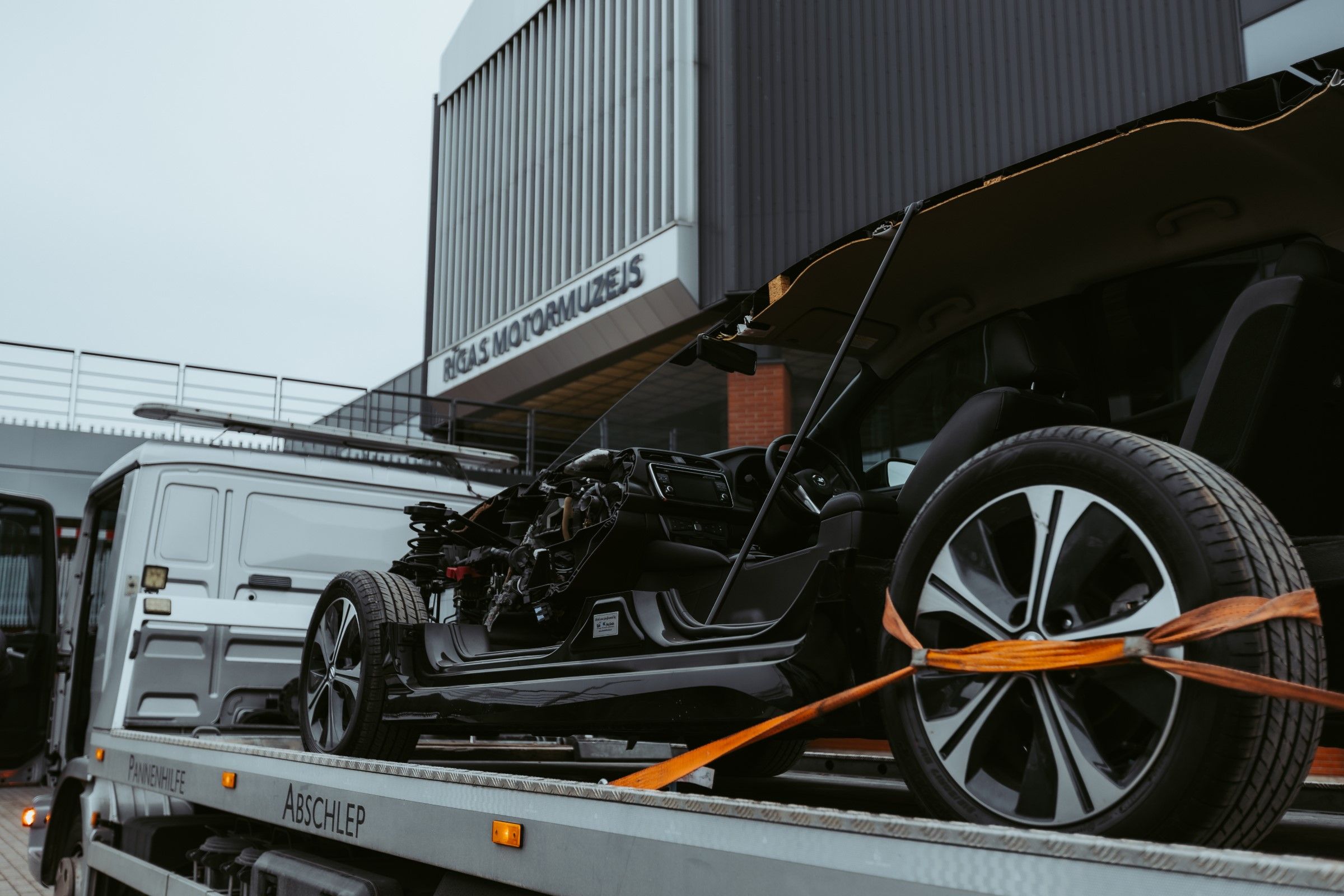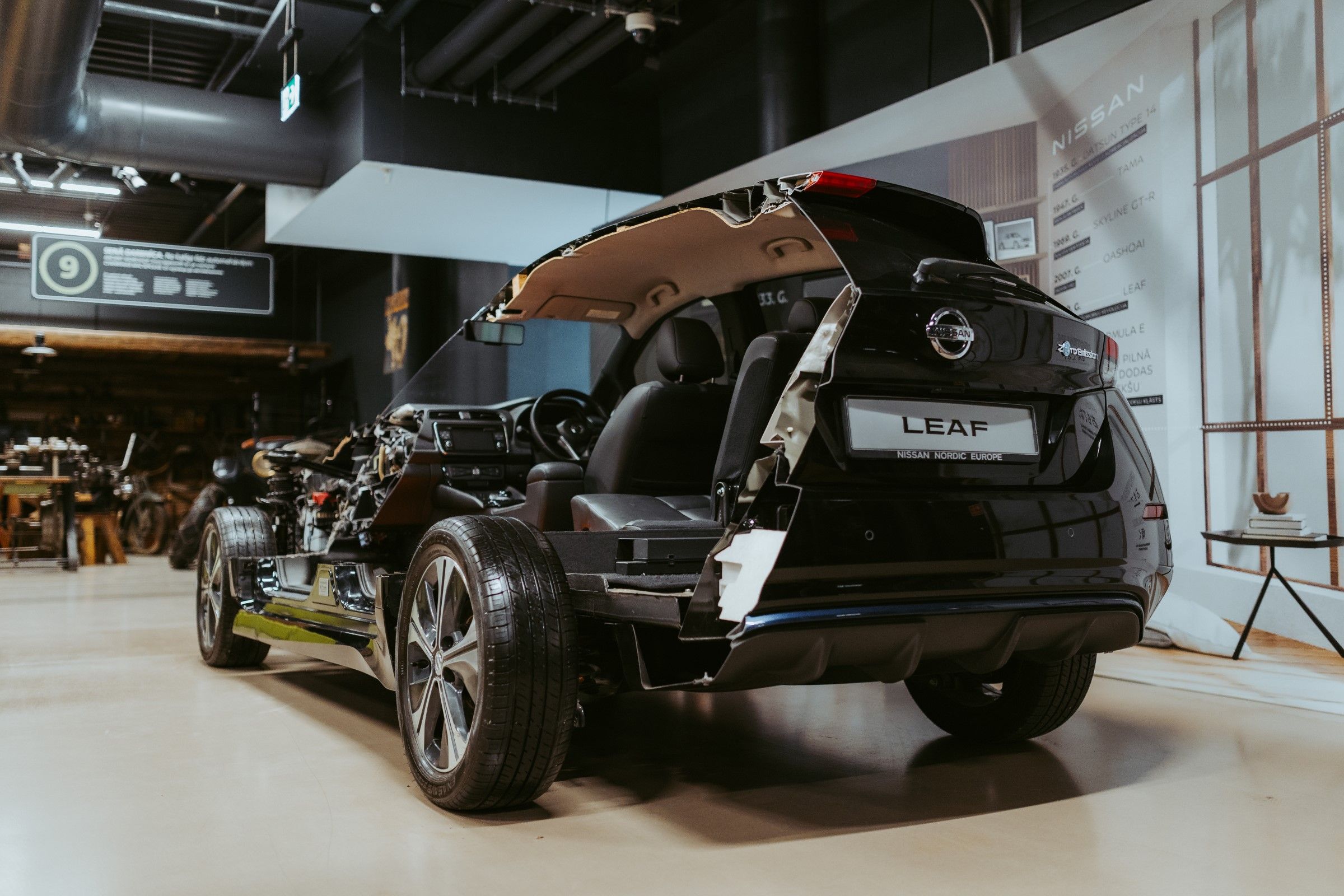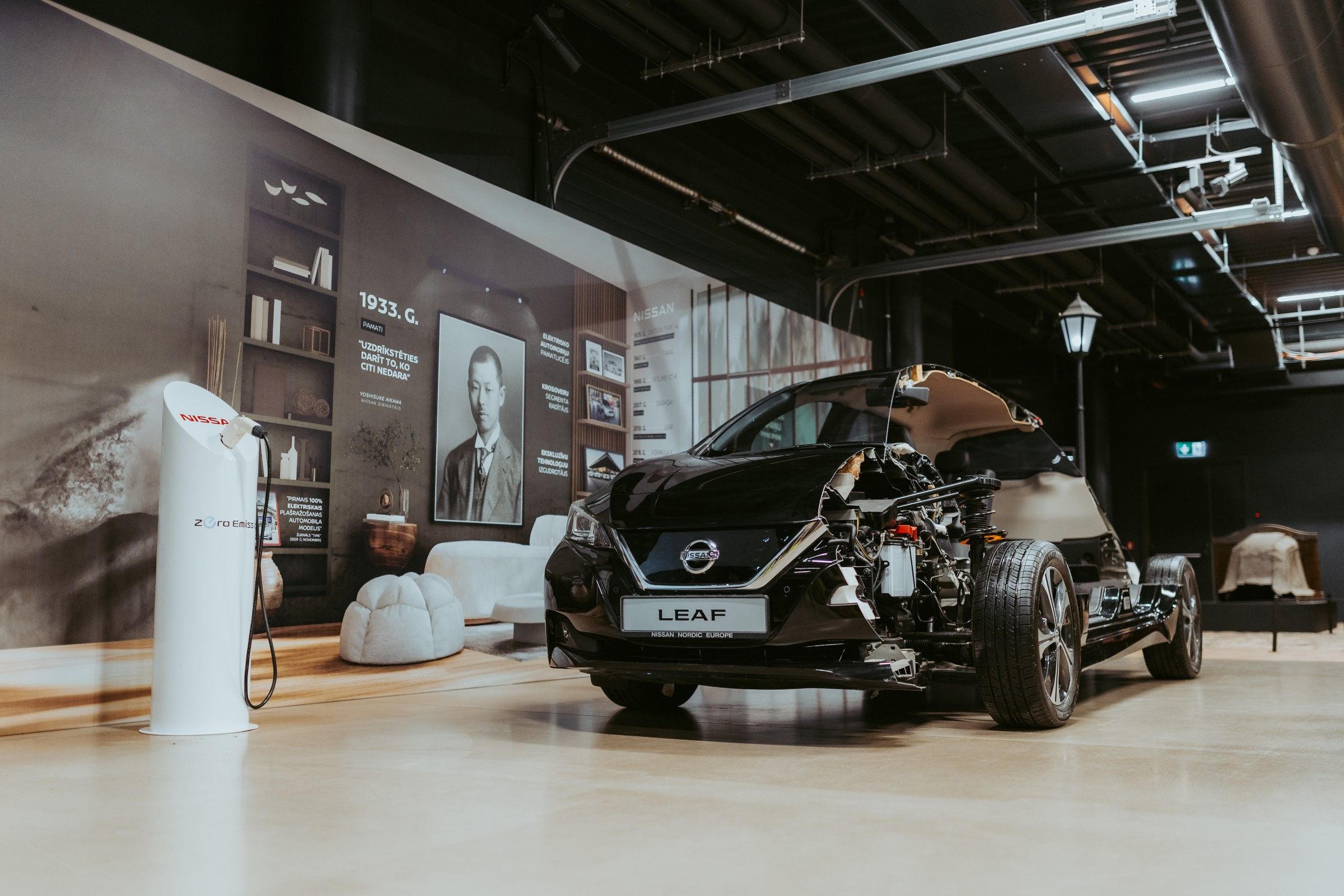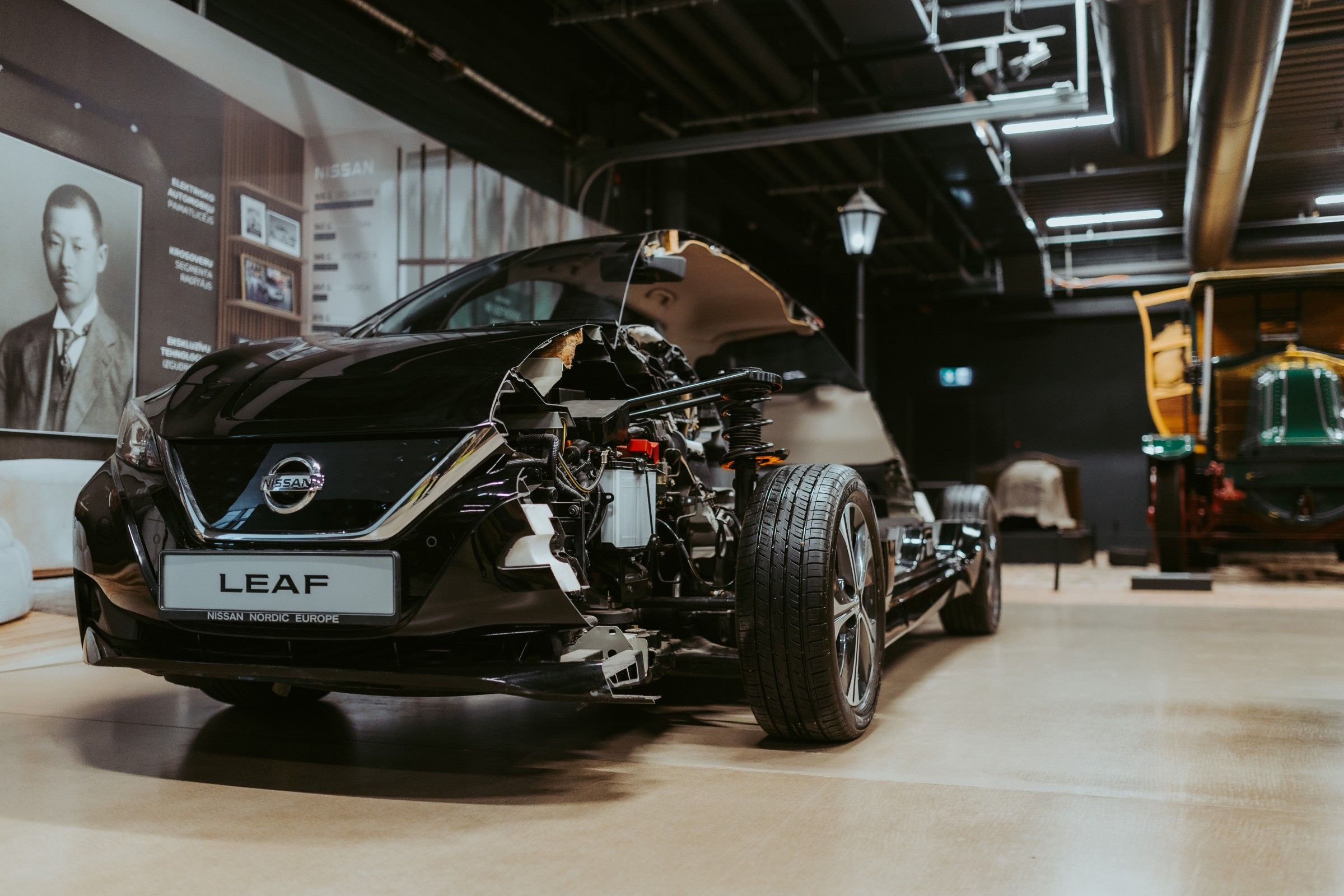The largest car museum in the Baltic States in Riga has been filled with a new unusual exhibit – a second-generation Nissan Leaf electric car cut in half. What the hell is a 2018 car running in a giant display of vintage, classic and historic vehicles?
Cut in half, but running, the Riga Automobile Museum is the largest and one of the most modern technical museums in the Baltic States. It houses special exhibits such as a 1938 Auto Union Type-D racing car with a unique V16 engine, Leonid Brezhnev’s wrecked Rolls-Royce, Latvian-built Dakar rally cars and a host of other vintage, rare and exceptional models .
Among them will now be a halter cut in half, the second-generation Nissan Leaf electric car, which was donated to the museum by the brand’s distributors for the Baltic countries. “This particular exhibit really deserves a place in a museum because it is quite unique.
The Nissan Leaf model is interesting in that it contributed significantly to the evolution of transport towards electromobilization. This car has historical significance”, says museum director Agris Šmitas. Nissan Leaf, produced in 2018, was meticulously cut by Estonian craftsmen 6 years ago. The purpose of this project is to show the public how the components of an electric car look and work.
The mechanics did an exceptional job: they cut out half of the body, cut the front and rear windows in half, the dashboard, cut the floor and other parts of the body so that all the main components of the electric car became open and visible. And the most impressive part is that the craftsmen did not damage any wires or components while cutting the body, so this car is fully functional.
It charges, drives, multimedia, rear view camera. It is true that the exhibit, which had been largely slaughtered, could no longer participate in public traffic, so it was transported to exhibitions in the Baltic countries and Nissan representative offices in a covered trailer. Will serve educational purposes
As A. Šmitas points out, the Estonian project, which shows the technology of electric cars from a unique angle, will also help in the Riga Automobile Museum for educational purposes. “We organize various programs for schoolchildren and students, during meetings we show them not only classic but also modern vehicles. We are one of the most modern museums in Latvia, which is why we have to keep up with technology,” explains the director, why the museum does not deny itself new cars.
By the way, this is not the first interactive museum exhibit that reveals how technology works. It also has a 1940s Buick chassis on display, showing how the mechanical components work. And this Nissan Leaf will demonstrate the performance of the new generation of electric cars up close. “Although this car is modern, it is important for history. “Nissan Leaf” will really enrich the exposition”, assures A. Šmitas. What is the significance of the Leaf in automotive history? Leaf can be called a pioneer of everyday electric cars.
Before him, all electric cars were experimental, so they were produced in small series, and the Nissan model that debuted in 2010 became the first mass-produced electric car.
It was the first model to have a platform built from scratch for battery electric drive, so clever component placement gave the relatively small family city hatchback an extremely spacious cabin.
The first models were equipped with 24 kWh batteries, which were relatively large for that time, allowing to cover almost 200 km on a single charge in good conditions.
As a result, he was even able to leave the city. Nissan’s courage to invest in such a visionary project before the infrastructure was in place paid off. After a slow start, production took off within a few years, making the Leaf the most popular electric car in the world from 2011 to 2014 and 2016, and by 2021, the number of green cars produced will exceed half a million units.
Only later did other manufacturers enter the electric car market, the supply of models began to increase, and of course, the demand.
In 2017, significantly modernized second-generation Leaf models appeared, with a 40 kWh battery, a more powerful and more efficient engine. Even after a decade, the Leaf remains in the top three electric cars, trailing only the Tesla Model 3 and China’s domestically-focused Baic EC. The version that debuted in 2019 with a 62 kWh battery turned the model into a full-fledged car that can leave the city.
Although almost every manufacturer now offers several models of electric cars, the Leaf, a pioneer of mass electrification, is still in demand due to its affordable price and optimal size. For the Nissan manufacturer, this bold project and early diving into the depths of electromobility allowed it to become one of the leaders of this technology.




photo organizer











